#treasury of british comics
Text
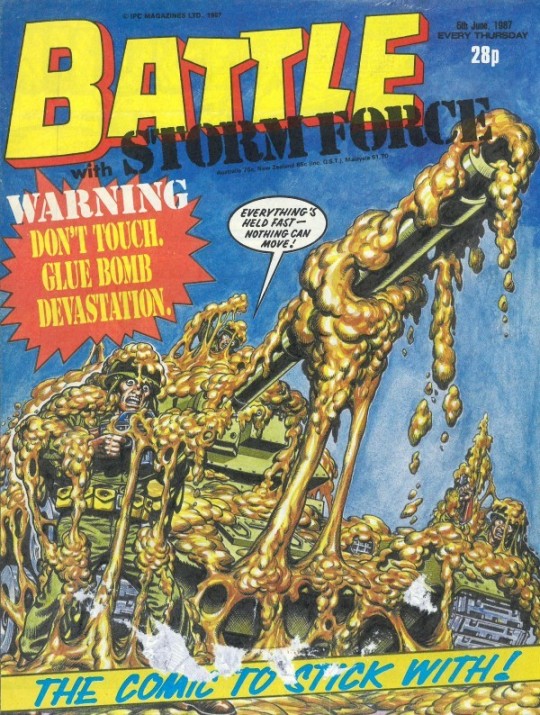
Battle with Storm Force No. 631, dated 6June 1987. Cover by Sandy James. Treasury of British Comics.
179 notes
·
View notes
Text
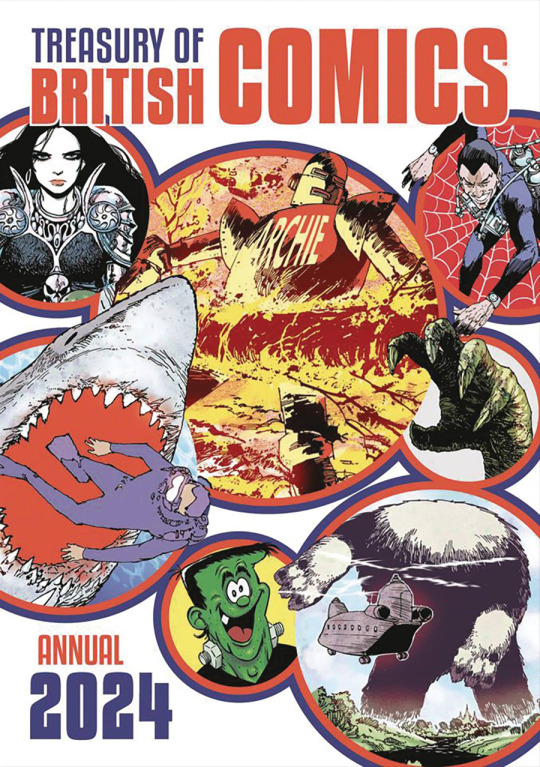
Out this week: Treasury of British Comics (Rebellion/2000 AD, $28.99):
“For over a century, the comic book annual has been an essential Christmas stocking filler for British children.” That sounds delightful, and Rebellion seems to be getting a huge jump on the Christmas season by releasing this collection of stories from past annuals and specials in March. It includes not only older material by Brian Bolland, Steve Dillon, Cam Kennedy and more, but also three new strips: “The Leopard from Lime Street Vs The Spider” by Simon Furman, David Roach and Mike Collins; “Black Beth” by Alec Worley and DaNi; and “Gustav of the Bearmacht” by Kek-W and Staz Johnson.
See what else is arriving at your local comic shop this week.
#comics#comic books#new comic book day#ncbd#new comics day#new comics#new comics wednesday#treasury of british comics#rebellion#2000ad
7 notes
·
View notes
Text
Rebellion announces new Battle Action mini series - our guide to the returning strips
Battle Action, 2000AD publisher's relaunch of the title inspired by two classic British weekly comics, Battle Picture Weekly (aka Battle) and Action, is back as a five-issue miniseries

View On WordPress
#Adventure Comics#Battle Action#Cooley&039;s Gun#Crazy Keller#D-Day Dawson#Death Squad#downthetubes News#Dredger#Garth Ennis#Hellman of Hammer Force#HMS Nightshade#John Wagner#Johnny Red#Keith Burns#Major Eazy#Nina Patrova and The Angels of Death#Rebellion#Treasury of British Comics#War Comics
21 notes
·
View notes
Text

The Turbo Jones Collection from Rebellion's Treasury of British Comics Line featuring superb art by Ian Kennedy, Vanyo & Keith Page.
Written by Barrie Tomlinson, this strip ran in the weekly Wildcat comic during 1988-1989, mostly black & white with some colour pages.
Cover by Ian Kennedy.
#comic books#british comics#turbo jones#wildcat comic#rebellion#treasury of british comics#vanyo#keith page#barrie tomlinson
1 note
·
View note
Text
Finally made it to the comic book shop today and picked these up!
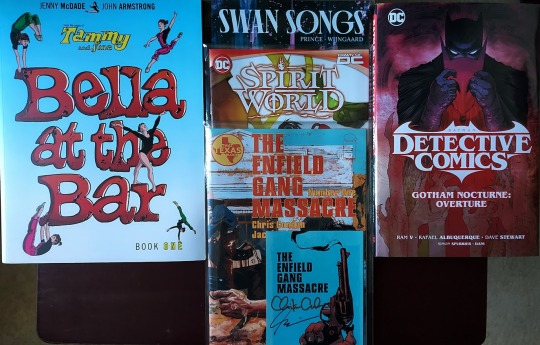
I'm most excited about these two (sorry Spirit World):
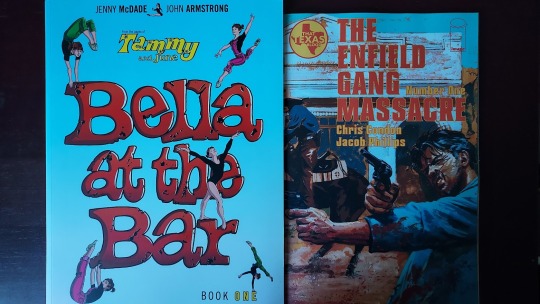
Nearly did a happy dance right in the shop when I saw them xd
I'm sooo glad I have a copy of Bella at the Bar now. It's the first comic I've wanted to read that I've truly thought may actually end up out of print, so thank you to @okcomics for ordering it for me and saving me from a future of trawling through eBay searching for old issues of Tammy xd
Also. THE ENFIELD GANG MASSACRE A;FJALSD;FJA;SOIFJA;SDJFISJ !!!!!!!!!!
Cannot wait to read it and stare at the lovely art. (I suspect I'm going to end up needing to get another copy of it so I can cut out what I think will be my favourite scene/panel/thing/whatever it is called and frame it. xd)
So far I've touched it. The newsprint paper feels so nice. I'm in love. Send help. xd
#comics#dc comics#image comics#treasury of british comics#rebellion#bella at the bar#enfield gang massacre#that texas blood#spirit world#swan songs#detective comics gotham nocturne overture
0 notes
Text
Rebellion to Publish 'A Very British Affair: The Best of Classic Romance Comics', Curated by David Roach, in Early 2023
Rebellion to Publish ‘A Very British Affair: The Best of Classic Romance Comics’, Curated by David Roach, in Early 2023
If you’re a classic comics aficionado and you see the name “Shirley Bellwood” in a list of creator credits for a new collection you are instantly going to want to know more. Rebellion have announced a new compilation of vintage romance British comics, curated by David Roach. A Very British Affair will be published in January 2023. More details in the press release below.
It’s the comic book…
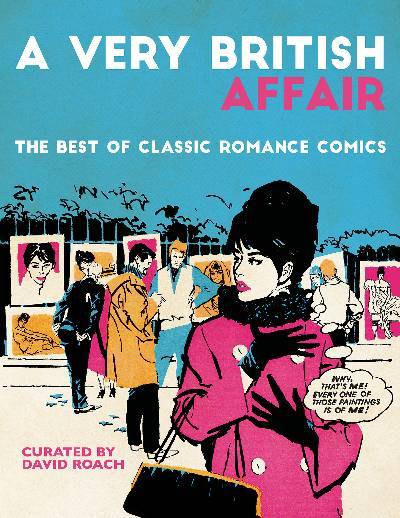
View On WordPress
#a very british affair#angel badia camps#david roach#Rebellion#shirley bellwood#treasury of british comics
0 notes
Text
I did some interior art for Rebellion's Treasury of British Comics miniseries, feat. a few people with really improbable names and the most machines I've ever drawn
It's out today! Out today! On the 2000AD shop along with the other two issues in the miniseries!



^ My favourite panels not including the panels that would be spoilers which is all the other ones :)
#2000ad#rebellion#comics#comic#illustration#art#my art#artists on tumblr#comics on tumblr#illustrators on tumblr
24 notes
·
View notes
Photo

Raymond Briggs, who has died aged 88, did a great deal to elevate the art of illustration to being something much more than a servant of the written word. Though he was best known for his hugely popular books Father Christmas (1973) and The Snowman (1978), his output also explored themes such as war, politics and the environment through a deeply human, very British lens that often settled on the quiet heroism of ordinary lives.
Briggs may be seen to sit comfortably in the English anecdotal tradition exemplified by Randolph Caldecott in the 19th century and Edward Ardizzone in the 20th, but his often wordless graphic literature built bridges between the picture book and the comic or graphic novel, introducing a new way of reading to the adult publishing market, or at least asking grownups to relearn the business of reading a silent visual sequence.
He started out in 1957 by hawking his portfolio around as a graduate of the Slade School of Fine Art, London, picking up freelance illustration work from newspapers, magazines and design studios. His first book commission came from the editor Mabel George at Oxford University Press, in the form of illustrations to Peter and the Piskies: Cornish Folk and Fairy Tales (1958) by Ruth Manning-Sanders.
George championed the work of a number of artists who were to transform picture-book illustration in the early 1960s, including Brian Wildsmith and Charles Keeping. She sought out printers who were at the cutting edge of developing technology, and who could do justice to the work of these emerging artists. But, as with most illustrators, Briggs’s early working years involved undertaking a range of commissions, drawing anything and everything, starting off with a schematic diagram for House and Garden magazine in 1957 – “how deep to plant your bulbs”.
As various narrative texts came his way, he realised that not all of them were of the highest quality, and took to writing himself. In 1961 he wrote and illustrated two books, Midnight Adventure and The Strange House, for the publishers Hamish Hamilton, with whom he would have a lasting working relationship.
That year, he began teaching illustration part-time at Brighton College of Art (now Brighton University’s faculty of arts) at the invitation of the then head of department, the calligrapher and engraver John R Biggs. He continued to teach for a day a week at Brighton until 1987, and his tuition was much admired and appreciated by generations of artists including the prolific illustrator and Observer political cartoonist Chris Riddell.
In 1963 Briggs had married the painter Jean Taprell Clark. Her death from leukaemia in 1973, and the deaths of his parents, led Briggs to throw himself into his work. A major breakthrough had already come in 1966, with The Mother Goose Treasury, for which he received his first Kate Greenaway medal. Father Christmas brought him a second, and catapulted him to fame. His grumbling, lavatorial and flawed Santa was immensely popular.
As with all Briggs’s subsequent titles, the book is full of autobiographical elements and references. His own childhood home and Loch Fyne holidays appear regularly and he himself pops up in the follow-up, Father Christmas Goes on Holiday (1975).
Briggs can be found standing ahead of Father Christmas in the queue for a shave at the campsite, along with the illustrator John Vernon Lord (sporting his initials on his wash bag). The author’s VW Camper van would make regular appearances too. Fungus the Bogeyman (1977) could also be seen as a character very much close to home, displaying as he does an extreme version of the author’s own tendency to be outspoken and impatient.
At Hamish Hamilton the newly arrived editor Julia MacRae (later to set up her own imprint) played a major role in developing the artist’s career. The illustrator John Lawrence, who was also published by Hamish Hamilton, recalled those days with great fondness: “All the talk was about ‘is the world ready for Fungus the Bogeyman?’ and we all turned up at the launch party in green wellingtons surrounded by buckets of suspicious-looking green liquid, wondering whether it might be the wine.”
The subject of mortality formed a recurrent theme, addressed explicitly in Briggs’s account of his parents’ lives, Ethel & Ernest: A True Story (1998), which was made into an admired full-length animation broadcast at Christmas in 2016, and implicitly in the melting at the end of The Snowman and the disappearance of The Bear in the 1994 book of that name.
But perhaps the most powerful motivation was a hatred of injustice by authority toward the powerless and naively respectful common man. The latter could be seen most directly in When the Wind Blows (1982), Briggs’s examination of an elderly couple’s attempts to follow government guidelines as nuclear war breaks out; and The Tin-Pot General and the Old Iron Woman (1984), a thinly disguised General Leopoldo Galtieri and Margaret Thatcher.
In 1982 he told the Times: “When I did [When the Wind Blows] I was not remotely a CND supporter. I simply thought it was good subject. It is highly depressing and fairly political, and I could not even think who was going to buy it. But I never think of the potential audience when I embark on a book; this was not even done specifically for children.”
Nevertheless, the children of his long-term partner, Liz, provided inspiration and source material for other projects, notably The Puddleman (2004), which grew from a remark made by one of the young children on passing a puddle while the family were out walking in the countryside.
His final book was consciously intended to be just that. Compiled across several of his last years, Time for Lights Out (2019) is a poignant, funny and deeply honest exploration of the experience of ageing and reaching the end of life, in the form of a collage of verse, drawings and random thoughts.
Many of Briggs’s books were successfully adapted for film and other media, Channel 4’s 1982 animated film version of The Snowman, with its familiar theme song Walking in the Air, became a staple of Christmas Day TV. Briggs endorsed a sequel, The Snowman and the Snowdog, broadcast in 2012. Other books were translated for stage and radio, with Briggs taking a keen interest in the overall production.
He was born in Wimbledon, south-west London, to Ethel (nee Bowyer) and Ernest Briggs. Their first meeting is beautifully described in the wordless opening sequence of the book devoted to their story. Ethel, a young parlour maid in a Belgravia house, had been innocently shaking out her duster from an upper window as Ernest passed by on his bicycle and confidently returned what he took to be a friendly wave.
Briggs attended the local Rutlish school and went on to study at Wimbledon School (now College) of Art, the Central School of Arts and Crafts (now Central Saint Martins) and, after a two-year break for national service, the Slade. His father, a milkman, had tried to dissuade his son from studying at art school, fearing that it would not equip him for stable employment.
Briggs’s keen interest in narrative drawing was not welcomed at Wimbledon School of Art, which was rooted in traditional representational painting. He recalled: “I had gone to art school to learn to draw so as to become a cartoonist. But I was soon told that cartooning was an even lower form of life than commercial art.”
Such prejudices, still not entirely eradicated today, were commonplace at art schools of the time. Although he bemoaned his tutors’ failure to recognise a “natural illustrator”, the formal training that he received imbued in Briggs a strong sense of structure and of the importance of good draughtsmanship. These equipped him well in book illustration, although he left the Slade with what he saw as a poor sense of colour and a dislike of paint. When he eventually arrived at the film version of The Snowman, he expressed pleasure at how it so faithfully and painstakingly replicated his coloured-pencil technique, despite the massively labour-intensive approach that this necessitated.
The characteristic that the journalist John Walsh described in a 2012 interview as a very English “strenuous curmudgeonliness” had become in later years a stereotype that Briggs embraced, exemplified by his column in the Oldie, Notes from the Sofa, collected in book form in 2015, where he would rail against sundry incomprehensible aspects of modern life.
But friends knew another side to Briggs – loyal and playful, an inveterate practical joker. Lord once made the mistake of confessing to a dislike of dogs in the presence of Briggs, thereby immediately committing himself to becoming the recipient of all manner of canine-related gifts on subsequent birthdays and Christmases. Like so many of his characters, Briggs’s grumpiness never quite managed to conceal an underlying warmth and kindness. In 2017 he was appointed CBE.
Liz died in 2015. He is survived by her children, Clare and Tom, and grandchildren, Connie, Tilly and Miles.
Raymond Redvers Briggs, illustrator and author, born 18 January 1934; died 9 August 2022
Daily inspiration. Discover more photos at http://justforbooks.tumblr.com
27 notes
·
View notes
Text
Battle Action Force Returns in New Treasury Editions!
Battle Action Force Returns in New Treasury Editions! #comics #comicbooks
Battle Action Force was published weekly from October 1983 to November 1986 by IPC Magazines limited, and brought together some of the greatest talents in the British comics industry of that time, both on the editorial and illustrative fronts including names like Gerry Finley-Day, Geoff Campion, and Cam Kennedy. Included within its pages were the adventures of “Action Force”, created by British…

View On WordPress
#battle action force#cam kennedy#geoff campion#gerry finley-day#hasbro#palitoy#rebellion publishing#skeletron#total toy books#trade paperback#trade paperbacks
1 note
·
View note
Photo

Announcing the Treasury of British Comics Annual 2024 from @2000AD/#Rebellion! #comics http://ow.ly/UUj150OCIYG
0 notes
Text

Eagle No. 466, dated 23 February 1991. Charley's War cover. Don't know who drew the main image but the side panels are by Joe Colquhoun. I think this was Charley's one and only Eagle cover. Treasury of British Comics | The Dan Dare Corporation.
#charley's war#joe colquhoun#23feb#1991#eagle#new eagle#treasury of british comics#dan dare corporation
13 notes
·
View notes
Text
DC Comics Toddler Toons
Someone with a criminal British background, is selected, by a Jewish attorney, in town, to be Batman.
The attorney, places his son, with Batman.
Batman, recognizes the child, as a Jew.
Another Jew, approaches, Batman unaware that the child is Jewish, and becomes Lex Luthor, for a split second, bashing the Jew, into Superman.
The attorney’s son, becomes Joker, in a rage, that he isn’t Superman, Batman’s best buddy, as indicated by the comics.
Later, Batman selects a Gentile, to bully, and Superman gets it to stop, creating Lex Luthor, someone with a rude joke, about Batman, unaware that Billy Batson, isn’t real (the Kaiser was replaced, by Britain).
Upon learning, that Batman and Superman wanted the Kaiser to win the Great War, to prevent the Holocaust, Joker and Lex Luthor swear revenge, concerned about “great savings”, their comic book collections, being fake.
Batman then goes into “Wayne Enterprises”, the dole, Superman joins the CIA, with everyone claiming he’s Mossad, Joker joins the Mossad, after noticing that Batman is on anti-psychotics and “isn’t a real spy”, and Lex Luthor tries joining the FBI, but gets assigned to make video games, for comic fans, the FBI’s treasury fund.
1 note
·
View note
Text
Out Today: the all-new Battle Action #1, available in comic shops, featuring “Johnny Red” and “HMS Nightshade”
Out Today: the all-new Battle Action #1, available in comic shops, featuring “Johnny Red” and “HMS Nightshade”

View On WordPress
#Battle Action#Dan Cornwell#downthetubes News#Garth Ennis#HMS Nightshade#John Higgins#John Wagner#Johnny Red#Keith Burns#Treasury of British Comics#War Comics
8 notes
·
View notes
Text

The first volume of The Steel Claw from Rebellion and their Treasury of British Comics line.
This is the webshop exclusive hardback edition with a great cover by Brian Bolland.
The Steel Claw originally appeared in the Valiant weekly comic and made his debut in the 6th October 1962 issue.
This volume collects that 1st appearance and others till the 21st September 1963 issue plus tales from the Valiant 1965 & 1966 Annuals.
These stories were written by Ken Bulmer and illustrated by Jesus Blasco.
#ken bulmer#jesus blasco#comic books#british comics#valiant comics#the steel claw#brian bolland#rebellion#treasury of british comics#hardback#webshop exclusive
0 notes
Text
Previewing One Of The Greatest British Comics Of All Time: 'The Rise And Fall Of The Trigan Empire' Vol. III
Previewing One Of The Greatest British Comics Of All Time: ‘The Rise And Fall Of The Trigan Empire’ Vol. III
Our regular 2000 AD expert, Richard Bruton, revealed the line-up of releases coming out this year from Rebellion, with a third volume of The Rise and Fall of the Trigan Empire out this July and up for pre-orders now. It’s a classic strip that any kid of the ’60s and ’70s will fondly remember and now magnificently reprinted as both a limited edition hardback (with an exclusive Chris Weston cover)…

View On WordPress
#Chris Weston#Don Lawrence#Look and Learn#Rebellion#The Rise And Fall Of The Trigan Empire#The Rise and Fall of the Trigan Empire Volume III#Treasury of British Comics
4 notes
·
View notes
Text
The Rise and Fall of the Trigan Empire Vol. I-II - Decades on, Mike Butterworth and Don Lawrence's Masterpiece Lives Up to Its Legendary Status
The Rise and Fall of the Trigan Empire Vol. I-II – Decades on, Mike Butterworth and Don Lawrence’s Masterpiece Lives Up to Its Legendary Status
If you grew up as a comics fan in the 1970s in the UK you’ll no doubt have a version of this story to tell. With pocket money limited, and the newsagent shelves absolutely crammed full of weekly anthology comics of every genre imaginable, it was a near impossible choice to select just a couple of gems from the bursting treasure chest of comics wonders. Racked among those comics was a magazine…
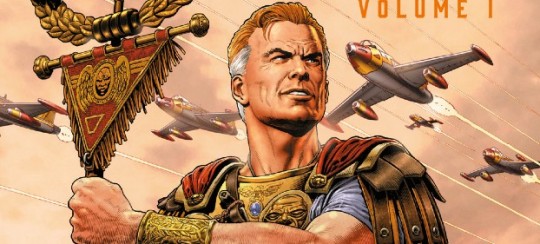
View On WordPress
#don lawrence#mike butterworth#ron embleton#the rise and fall of the trigan empire#the trigan empire#treasury of british comics#treasury of british comics week
2 notes
·
View notes